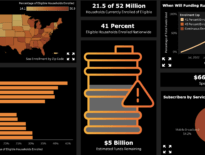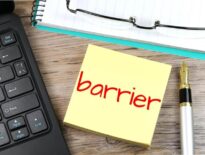With the Affordable Connectivity Program (ACP) poised to run out of funding in early Q2 next year, and no funding source lined up to keep the program alive, a recent U.S. News & World Report survey underscores the significance of the program in the face of rising prices from the nation’s major Internet Service Providers (ISPs).
The ACP offers a monthly benefit of $30 dollars for qualifying households and $75 for qualifying households on Tribal lands (as well as in some remote areas). Over 20 million Americans to date have enrolled in the program to help pay their Internet service bills, but with the $14.2 billion ACP program on track to run dry as soon as May of next year – even amid a historic national effort to establish “Internet For All” – the affordability crisis has become more worrisome for a growing number of Americans.
U.S. News & World Report’s survey found that Internet prices are going up and that families are compromising other expenses to pay for connectivity, affirming the urgency among digital equity advocates to identify a source of continued funding for ACP, as well as push for more structural solutions that address the root causes of why Americans pay among the highest prices for broadband service in the developed world.
Though the report doesn’t directly explore monopoly concentration in broadband markets, it does offer some revealing insights. Conducted in August 2023, U.S. News & World Report surveyed 3,500 adults in the United States to get a sense of the choices that broadband-hungry Americans have, the speeds they are getting, and how affordable their Internet service is.
Survey respondents subscribed to an array of different Internet Service Providers, but the most commonly observed were (in order): Xfinity from Comcast, Spectrum, AT&T, Verizon, and T-Mobile.
The report found that 8 percent of respondents had download speeds lower than 25 Mbps, and 36 percent download speeds of 100 Mbps or less. And as the study notes:
“The Federal Communications Commission says broadband capability requires consumers to have access to actual download speeds of at least 25 Mbps – and a surprising number of U.S. internet users aren’t even getting that. After completing the internet speed test, 8% of our respondents report having a download speed less than 25 Mbps – meaning that nearly one in 10 households doesn’t actually have broadband internet service.”
“When Internet speed is too slow, users may encounter lags, buffering, or poor quality, and in some cases the app or website may time out. This is frustrating, but – more importantly – it may present an obstacle that prevents the individual from performing essential tasks or getting critical information.”
Of those surveyed, 20 percent said they only had one ISP available to them for service, while 38 percent reported that they didn’t know how many ISPs were available to them.
The report suggests that poor consumer literacy may contribute to these figures, citing the FCC maps which indicate 94 percent of Americans have three or more options. It can be debated whether it’s literacy, a failure of monopoly incumbents to report accurate data, or federal policymaker’s willingness to accept faulty mapping data. But, what is beyond dispute is the near universal agreement that the maps overstate the service options available to potential subscribers.
(A 2020 ILSR report found that 83 million households were living under a cable monopoly.)
The report goes on to note that nearly 2 in 5 respondents are having to compromise other personal expenses in order to afford their Internet connections. To further buttress the point, the survey also found that 53 percent reported paying an initial $20 to $60 at the beginning of their current contract, and now 48 percent report paying between $41 and $80.
Additionally, 61 percent of respondents cite inflation, including its effect on other household expenses like groceries, has made it hard for them to afford their Internet connection. Only 45 percent of respondents feel they are getting their money’s worth for the monthly price they pay for their Internet connection.
Without a reallocation of ACP funding, Internet subscribers across the country are at risk of losing their Internet access or being charged for service they cannot afford.
Some are advocating for bridge funding to keep subscribers connected in the near term, with longer term funding for the program coming from a reconfigured Universal Service Fund. Recent advocacy has pushed to get funding reallocations integrated into the farm bill, among other upcoming legislation.
While renewal of support for the ACP will be essential to ensuring that low-income families don’t get their Internet service cut off in the near term, and as some economic analyses suggest, can even help incentivize investment in some high-cost rural areas, additional structural solutions are needed to make quality broadband affordable to everyone long into the future and ensure that digital discrimination, or digital redlining, is eliminated.





